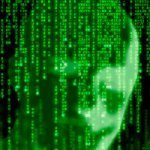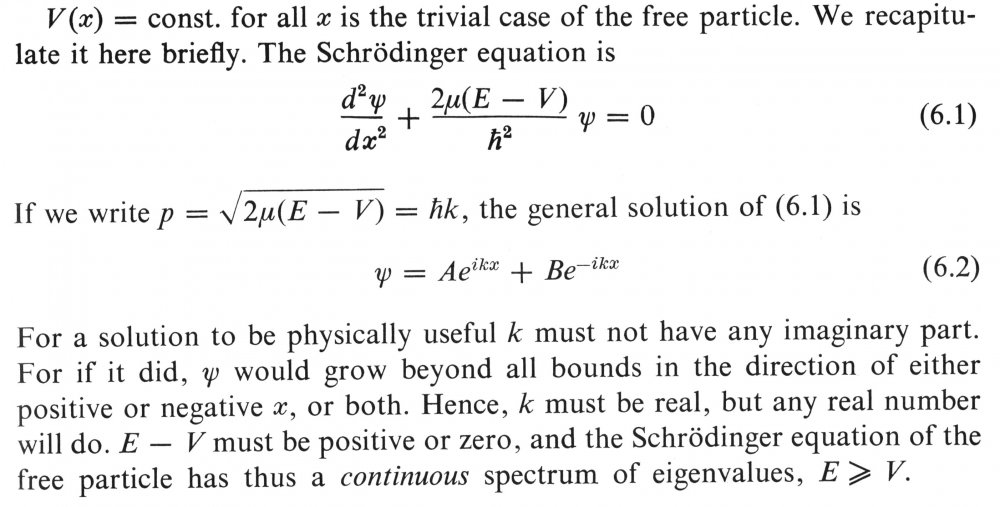

Rob McEachern
Senior Members-
Posts
97 -
Joined
-
Last visited
Profile Information
-
Favorite Area of Science
physics
Recent Profile Visitors
3031 profile views
Rob McEachern's Achievements

Meson (3/13)
14
Reputation
-
Not anymore. In twenty-first century physics, they have become accepted without ANY experimental evidence: "There is no more experimental evidence for some of the theories described in this book than there is for astrology, but we believe them because they are consistent with theories that have survived testing." Stephan Hawking, "The Universe in a Nutshell", Bantam Books, 2001, pp 103-104. “Sabine Hossenfelder argues, we have not seen a major breakthrough in the foundations of physics for more than four decades… The belief in beauty has become so dogmatic that it now conflicts with scientific objectivity… Worse, these "too good to not be true" theories are actually untestable…” https://www.amazon.com/Lost-Math-Beauty-Physics-Astray/dp/0465094252
-
It would be very interesting if it were actually true. But it is not. The most fundamental loophole of all, can never be closed, not even in principle; because strange correlations MUST exist, whenever two or more measurements are EVER even attempted on an entity, that only enables one (an entity that only manifests a single bit of information). For a more detailed explanation of this ultimate loophole, see http://vixra.org/pdf/1804.0123v1.pdf
-

Amplitude of a wave and general laws of physics
Rob McEachern replied to quiet's topic in Quantum Theory
Thermodynamics. That is where Fourier analysis originated. There is no wave function in any problem. The use of the term "wave" is a misnomer. The structure of Schrodinger's wave equation is unlike that of the classical wave equation. But it is identical to the classical heat equation; it would have been more appropriate to call it the Schrodinger heat equation, describing a process similar to heat-flow, rather than wave propagation. -

Amplitude of a wave and general laws of physics
Rob McEachern replied to quiet's topic in Quantum Theory
Any experiment in which a multi-channel detector, responds to a mono-energy input (quanta) within each individual channel. That is what every Fourier transform's power spectrum describes. Thus, since wave-functions are mathematically described via Fourier transforms, it is true of every wave-function, whenever each "bin" in the transform receives only entities (quanta) with a single energy, Ephoton ,which may differ from one channel to the next. That is the origin of the Born rule. It happens with every experiment, that can be described mathematically via a Fourier transform's power spectrum (as are all wave-functions-squared), since it is a mathematical property of a Fourier transform, having nothing to do with physics. The only experimental condition that must be met, for the Born rule to be valid, is that each bin of the power-spectrum/histogram be obtained by a mono-chromatic integration of quanta. In other words Ephoton must be the same for all the photons detected in a bin, but can differ from bin-to-bin. For example, a diffraction grating or prism, will deflect photons of different energies/frequencies at different angles. Consequently, detectors placed at different angles will each receive photons within a single, narrow band of energies, thus ensuring the validity of the Born rule. On the other hand, if you remove the grating or prism, and let white-light hit the detectors, the mono-energy condition is not met and the Born rule does not apply - nor will you observe an "interference" pattern behind any slits, for that very reason. In the case of white light passing through slits, there is no longer a single, unique value for Ephoton , at each deflection angle, so the ratio Etot/Ephoton no longer yields a correct inference of N; you still get a spectrum (AKA interference pattern) but it no longer yields a correct inference of probability, or even looks anything like the more familiar interference patterns obtained with mono-chromatic inputs. “The important thing about electrons and protons is not what they are but how they behave, how they move. I can describe the situation by comparing it to the game of chess. In chess, we have various chessmen, kings, knights, pawns and so on. If you ask what a chessman is, the answer would be that it is a piece of wood, or a piece of ivory, or perhaps just a sign written on paper, or anything whatever. It does not matter. Each chessman has a characteristic way of moving and this is all that matters about it.” P.A.M. Dirac -

Amplitude of a wave and general laws of physics
Rob McEachern replied to quiet's topic in Quantum Theory
Probability and energy density are related. Whenever the energy arrives within a detector, in equal quanta of energy, then the number of quanta detected by any given detector, can be inferred, from the ratio of total energy detected, divided by the energy per quanta. This fact is independent of the nature of the quanta; the debate about particle vs. wave is irrelevant. All that matters is that the quanta have equal energy. Which is why the experiments are always designed to ensure that is the case. -
I already have. See below. By the way I am not so young anymore either; Been there, done that. No ramblings are involved. I previously provided links to both a "much better defined", line-by-line computer demonstration, together with a paper that describes it, that falsifies Bell's claim and all the existing claims for "loop-hole free" Bell tests (by actually constructing classical entities, that falsify the most fundamental, unrecognized assumption of all, namely that there is "something else to measure" after the first measurement has been completed). Anyone can reproduce the result on their own computer. It has been publicly available for two years, been reproduced by others, and no one of the over 1000 different people that have downloaded the demonstration to date, has been willing to publicly declare that they have found any error it. When I challenged some of the usual suspects here to attempt to do so, they all went silent - see the last post in the thread "Is there any reason this Quantum Telegraph couldn’t work?"; they would rather shut up than calculate, when it means their dogma is being falsified. That is one of the major problems with physics today, everyone says "put or or shut up" and then, when someone actually does "put up", very few are willing to ever admit that they cannot find a flaw in the argument; for fear of "losing face" if someone smarter than they, eventually comes along and finds the flaw, making them look dumb. So everyone just sits on the fence, hoping someone smarter themselves will come along and save them and their dogma. If you think you are that person, then hit me with with best shot. But don't give me any more "ramblings on the fringe of Science": State exactly were some problem lies within the computer demonstration, after you have downloaded it and run it, and actually thought about what you are witnessing. Put up or shut up. I'm calling your bluff.
-
On Challenging Science, particularly Physics, You have my sympathy Reg. Most living, theoretical physicists have yet to recognize (even though the long-dead masters, like Einstein and Schrodinger, repeatedly warned them about it) that they have fallen victim to the very problem noted in studiot's quote. Fools rush in, where wiser men have feared to tread. When you attempt to "measure something else", that your theory suggests exists, but that does not in fact actually exist in nature, then your theory "offers little" (though a little may nevertheless be a lot better than nothing). As I have pointed out in other threads on this site (to the dismay of the usual suspects), the uncertainty principle, the EPR paradox, Bell's theorem and all related matters are based on the supposed "self-evidently true" assumption, that after you have made a first measurement (as of position, or spin in one direction), then the ability to "measure something else" (like momentum, or spin in a different direction) should always be possible. But it is not always possible. In fact, it is impossible by definition, whenever the thing the physicists are attempting to measure, happens to manifest only a single bit of information. In that peculiar event, there is nothing "else" present, that can ever be reliably measured, not even in principle. That is what is meant by the term "bit of information" in Shannon's Information Theory. In this peculiar case, all measurements, after the first, must either reproduce the first, or be nothing more than an erroneous measurement of the first - by definition. Thus we now have quantum vacuum fluctuations, virtual particles, qbits, spooky action at a distance, etc. etc. ... all to account for those errors as being "something else", other that what they actually appear to be, producing weird correlations, that are consistently misinterpreted on the basis of the false assumption; namely that they "measure something else", something other than the ultimate “elementary particle” in reductionism, the least-complex possible entity, an entity manifesting the least-possible number of bits of information - a single bit - offering no possibility whatsoever of any uncorrelated, second measurement. Quantum theory is infested with such bad interpretations - assumptions about "measure something else", like blaming particles/waves/wavefunctions passing though a pair of slits for a supposed interference pattern, rather that recognizing that the pattern is merely the Fourier transform of the slit's geometry (more specifically, its power spectrum), and has little (but not nothing) to do with anything, particle or wave, passing through the slits. It's rather like blaming the light from the sun, for the visible pattern of your mother's face - How did the sun know what my mother's face looks like?!! Surely it must, for how else could I ever observe the pattern of my mother's face, if the sun was not emitting light that already knows/contains that pattern, before it ever struck her face?!!! But as Dogbert-the-physicist might say, "My theory is totally, totally different! My light, shining through the slits, really does know everyone's face, even before they were born! It all has to do with BlockTime! It has nothing to do with faces or slits modulating their information content, onto a carrier, that is, by itself, almost entirely devoid of any information!" Again, you have my sympathy, Reg. But you can take some solace from Stephen Hawking's quotes (The Universe in a Nutshell) "There is no more experimental evidence for some of the theories described in this book than there is for astrology..." and "Einstein thought that this (the EPR paradox) proved that quantum theory was ridiculous: the other particle might be at the other side of the galaxy by now, yet one would instantaneously know which way it was spinning. However, most other scientists agree that it was Einstein who was confused." And therein lies the difference between the wise men of old, that urged caution about such interpretations (a message not lost on their students, who subsequently urged their own students to “Shut up and Calculate!”), and all the later-day fools (Hawking's "most other scientists" AKA physicists) that rushed in, and ignorantly assumed that they, unlike their elders, could not possibly be confused by experiments that might "measure something else", other than what their new dogma proclaimed that they must have succeeded in measuring. So, as you have attempted to point-out, sometimes a difference between theoretical predictions of planetary motions and observations, can be correctly attributed to the prevailing wisdom/dogma of the day, such as an undiscovered planet. But other times, it "measures something else", like a previously unguessed, relativistic effect. But nowadays, as Hawking's quote indicates, more and more theoretical physicists have come to actually believe that the "beauty of math" alone justifies all their beliefs, in their favorite conclusions, deduced from their favorite "self evident" assumptions, and experimental evidence is neither necessary nor desired, to sustain their beliefs, anymore than for those believing in the "beauty of god." Because, “Hey, my conclusion really does follow from my premise! So it must be valid!” The possibility that the math just might, with absolute perfection "describe something else", a different premise, other than what the prevailing wisdom/dogma has supposed (the possibility suggested by the older generation of acclaimed physicists, like Einstein), has been summarily dismissed, as an "unnecessary hypothesis", by the lesser-lights in today's constellation of "best-selling" physicists. Laplace would roll over in his grave. And Santayana did say that "Those who cannot remember the past are condemned to repeat it." And Bacon would say "I told you so - 400 years ago - premises can only be justified via inductive reasoning based on actual observations, not deductive logic, however clever." Perhaps, since few physicists seem to (correctly) remember the past, I should note that Bacon decried Aristotle's over-reliance on deductive reasoning, for delaying progress in science, for 2000 years, since he thereby convinced philosophers to value deductive logic (inevitably based on unverified premises) above any actual observations of the real world, that might actually reveal that some premises probably (but not certainly) ought to be preferred over others. And now, for the past half-century, history repeats itself, and most present-day physicists see nothing at all of value in what the old philosophers had to say about such things, or even what older physicists of Einstein's caliber had to say - they were all just "confused", to use Hawking's term. As the old saying goes, the race does not always go to the swift and the strong, but that is the way to bet. I’m betting on Einstein’s conception of the universe, not Brian Green’s, or Stephen Hawking’s, however elegant they may be. Dubious premises result in dubious conclusions, regardless of their beauty.
- 59 replies
-
-1
-
Feeling the need to eat and feeling hungry are two very different things, for those dealing with frequent low blood glucose levels. It is not low blood sugar that makes you feel hungry. For example, a type-1 diabetic may feel absolutely bloated and stuffed after finishing a large meal, but still have a dangerously low (and still plummeting) blood glucose level, as the result of a fast-acting insulin injection, which may enter the system, before almost any of the previously consumed food has. Pure glucose gels and tablets, when eaten, enter the blood stream much faster than other carbohydrates, like pasta, and more than an order of magnitude faster than fat and protein. So the answer to your question is all about the timing. When your body really needs glucose, it needs it now - not an hour from now, much less a day from now. It is rather like needing air; it does not matter if you can be supplied with all the air in the world, a few minutes after your heart and/or brain have been permanently damaged due to an earlier short-term lack. A type-1 diabetic can lose consciousness in a matter of minutes, once their blood sugar starts to plummet, even when their stomach is full. The problem is, it is full of food, including most types of carbohydrates, that are absorbed more slowly than a fast-acting insulin. Consequently, it is not just the quantities of carbohydrates and insulin that matter, in this type of situation, but their respective absorption rates. That is why a very rapidly absorbed carbohydrate, like pure glucose, may need to be consumed, in spite of a full stomach. Once a diabetic has become unconscious, and thus unable to consume anything, the situation may be quickly reversed by either injecting glucose directly into their bloodstream, or as is usually preferred, by giving them an injection of the hormone glucagon, which causes the liver to rapidly (in a matter of minutes) release glucose into the bloodstream. An over-weight person is likely to have type-2 diabetes. They too will have problematic swings in their blood-glucose levels, just not as extreme as those likely to be encountered by the rarer type-1. But in either case, hunger and low blood glucose levels are not the same thing; one may feel the need to "eat something", in response to symptoms other than hunger, that tend to become familiar to diabetics, that have to deal with these other symptoms, on a fairly regular basis.
-
Yes it is. E= (Kinetic energy + Potential energy) = (K+V). So (E - V) = K+V-V = K; the potential exactly cancels out in the special case, where V is a constant, regardless of what the value of the constant is. Note also that, given the expression for p, p2/2m = (E-V) = K = mv2/2, just as one would expect, for a free particle with only kinetic energy. The momentum cannot change if the particle is free.
-
It is not possible. The solution that you gave and claimed; "Which I think is more useful as you can plug numbers into it." Is not a solution to Schrödinger's equation, if the energy changes. You will find the same thing in any other text book on the subject. The author of the text cited, was David Bohm - a rather highly regarded figure, in quantum theory.
-
In the book, there is a two-step process to evaluate a square potential: (1) solve the equation when the potential is constant everywhere (Swansont's question), which is done in the first paragraph, and then (2) evaluate what happens when a second level is introduced. But, if there is no second level (as in the question that was asked), then all the rest of the book, after the first paragraph is irrelevant: There is no second level that is less than the first. Potential wells exist when there is a relative change in potential. The partial derivative of kx with respect to x, depends upon both the derivative of k and the derivative of x, with respect to x. The derivation of your solution assumed the derivative of k with respect to x is identically zero - there is no dependency on position. It also assumed that the derivative with respect to time is also identically zero - there is no dependency on time. Hence, k is being assumed to be a constant, right from the start; it depends on neither of the two variables (position and time) in the equation. I fail to see why you find that to be an interesting result; all it says is that a static sine-wave exists. How does that revelation enlighten your knowledge of reality?
-
There can be no well, if the potential is constant everywhere; wells require more than one level of potential. Where there is a well, there can be no free particle. Nothing can change in the solution you gave, because, in the derivation of that solution, "k" was unwittingly assumed to be independent of both time and position.






